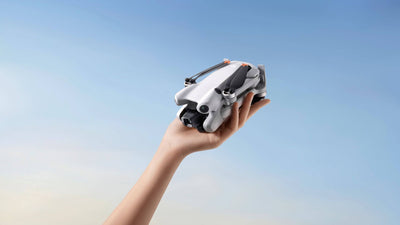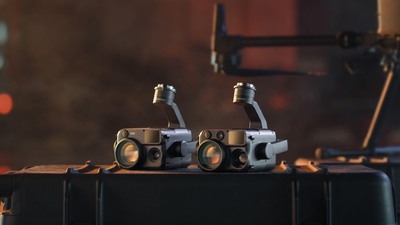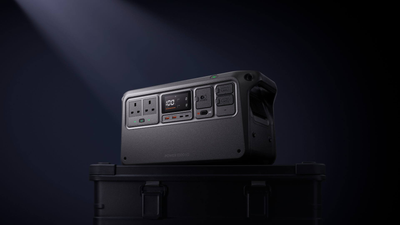Are Drones Allowed On Cruise Ships?
- by Stefan Gandhi
Taking a drone on your next cruise can feel like the ultimate way to capture sweeping shots of the open sea, dramatic sunsets and your ship cutting through waves. For both personal adventure and professional production, the idea of mounting your drone and creating cinematic footage from a vessel is hugely exciting. Yet, for UK based drone users, whether hobbyist, creative, professional or law conscious, the reality is more complex than simply packing the gear and pressing record. In this article I explore the practicalities of carrying and using a drone on a cruise ship, highlight what you should check ahead of time, break down the risks and opportunities, and help you plan for a smooth journey.
The Cruise Ship Drone Environment
Why A Cruise Ship Is Different
When you bring a drone on a cruise you are dealing with more than just your own flight area. The key difference is that you are on a moving vessel that crosses multiple jurisdictions, visits foreign destinations and operates under maritime as well as aviation rules. Your drone has to navigate not just the airspace but marine zones, port security rules and possibly the ship operator's own policy. The vessel's deck, the flight path near the ship, the port areas where you might launch, all these factors make for a more complex environment than a simple land-based affair.
Key Variables To Check
- The policy of the cruise line. Each operator has its own rules about what you can bring and how you can use it onboard and ashore.
- The jurisdiction of the country/port you will visit. You may dock in locations with their own drone registration, launch zones or outright bans.
- The type of ship and voyage. A short coastal cruise is very different to an ocean going vessel with multiple sea days and remote stops.
- The practical logistics. Storage onboard, battery transport, safe launch sites at port and how you retrieve your kit after flying.
What Cruise Lines Typically Allow Or Restrict
Bringing The Drone Onboard
Many cruise operators permit drones to be brought onboard in your luggage or cabin, but they place restrictions on how and when you can use them. Some may require you to declare it at embarkation; others may forbid bringing them at all. The safest assumption is to contact the cruise line in advance if you are unsure.
Using The Drone During The Cruise
In nearly all cases flying a drone while the ship is underway or tethered is heavily restricted or prohibited. The deck area, the open sea around you and other vessels make safe operation very difficult. Most use cases allow flying only when the ship is at port, you have disembarked, and you are in a legitimate launch area away from the ship.
Storage & Handling Onboard
Even if flying is allowed ashore, you will still need to deal with storage while at sea. Some ship operators require you to stow the drone securely in your cabin or hand it in when leaving the vessel at port. Batteries and chargers may have to meet airline or ship requirements as well.
Implications For Different Audience Segments
For The Creative Hobbyist
If you fly drones for fun and want epic shots of a cruise vacation, you will want a small, foldable, easy carry drone that meets airline batteries rules and is quick to launch. Plan ahead to shoot in a port city or scenic stop rather than trying to fly from the ship. Make sure you have the gear but accept you might not be able to fly from the deck itself.
For The Professional User
As a content creator or commercial drone operator, you must account for professional grade gear, insurance, permits and rigorous planning. Your cruise operator might require documentation and permission in advance. You will likely need to ensure that each port stop allows launch, that you respect local aviation authority requirements and the ship's liability stance. Your workflow must include battery transport, backup plans and a risk assessment for sea conditions and signal loss.
For The Travel Enthusiast Or Family/Gift Buyer
If you are buying a drone for a holiday or gifting it for a family trip, then simplicity and portability matter. A sub 250 gram drone that stows neatly and requires minimal setup is ideal. Accept that you might only launch a couple of times in a port environment. Focus on the fun, the family memory, not the expedition grade filming.
For The Law-Conscious Operator
Compliance is key. Even if you are on a cruise you must respect aviation regulations, battery transport rules, data protection of other passengers, and privacy norms. When you fly from a foreign country, you will be subject to their rules, and if you depart from the ship you must follow the local authority. Being aware of the ship operator's liability and your own insurance is important.
Practical Pre-Cruise Checklist
Here is a checklist to get you ready:
- Confirm the drone policy of your cruise line in writing or email.
Research each port of call for local drone rules, launch zones and fees.
- Ensure your drone fits airline or ship battery rules: carry-on, declared, spares.
- Pack the drone and remote securely with protective case and ensure everything is carry-on compatible.
- At embarkation declare or register your drone if required.
- Identify safe launch zone at each port: open area, no crowd, no restricted airspace.
- Ensure you have third-party insurance and a plan for data capture and storage.
- Secure your gear while onboard: storing it safely during sea days, dealing with cabin space and safe charging.
- Make a flight plan for the shore stop: arrive earlier to avoid boarding time pressure, exit and re-board smoothly.
- Make sure your software and firmware are up to date, you have spare batteries and a memory card backup.
Common Scenarios You Might Face
Scenario A: Short Mediterranean Cruise With Mostly Shore Days
You bring a compact drone, check the ship allows it, plan to fly at one or two port stops. Outcome: Very manageable. You will fly from shore rather than the ship. Ensures a smooth experience.
Scenario B: Large Ocean Cruise With Many Sea Days
You bring your drone but the ship policy forbids flying from the vessel. Outcome: Plan to store safely but only use at ports. Accept the limitation.
Scenario C: Professional Shoot Covering The Cruise Experience
You bring heavy kit, need to film the ship exterior, onboard lifestyle and destinations. Outcome: High complexity. You will need pre-approval from the cruise operator, possible escort, grounded logistics, remote pilot certification, local permissions. Might cost extra.
Scenario D: Family Holiday With Kids & A Simple Drone Purchase As A Gift
You buy a compact beginner drone, pack it for the holiday, anticipate one or two launches at port stops while everyone enjoys the day ashore. Outcome: Fun, low stress, minimal risk.
Key Risks & How To Mitigate
-
Confiscation or refusal. If you bring or use a drone contrary to the cruise line's policy you risk it being confiscated. Always check ahead.
-
Legal fines or restrictions. If you launch in a port area without the right permissions you might face local penalties. Pre-research each destination.
-
Insurance issues. Your policy may not cover you if you operate outside the permitted parameters (over water, from moving ship, etc). Confirm coverage.
-
Loss or damage. Flying over water or near a large ship increases risk of signal loss, crashes, drone falling into sea. Keep altitudes safe, return-to-home conservative.
- Privacy complaints. Filming other passengers, balconies or private spaces might lead to guest complaints or maritime security issues. Keep your operation respectful and well away from other guests.
Why Some Operators Ban Drones
Cruise ship operators often ban drones for reasons including safety, liability, navigation interference, privacy and security. The moving vessel environment is inherently complex. Launching a drone near a large ship could interfere with navigational sensors or crew operations. Some ports have strict airspace rules or security zones around ships, especially when docking. From the operator's viewpoint the risk profile is higher and the operational burden of checking pilot credentials, insurance and safe procedures can outweigh the benefit of allowing guest drones.
Recommendations For UK Operators Going Forward
- Keep your drone operations simple when aboard a cruise. Treat the ship as part of your travel logistics rather than the launch platform.
- Choose a drone that meets portability criteria: light, foldable, minimal battery risk, carry-on friendly.
- Brake airborne expectations. The best shots will often come from shore, not the deck.
- Use return-to-home, GPS stabilisation and conservative altitudes especially when flying near water.
- Respect fellow travellers, ship schedules, crew operations and the vessel's integrity.
- Ensure your insurance covers you when flying in a port abroad or in unfamiliar airspace.
- Consider shooting online via ground craft or handheld if drone operation seems too risky or complicated for the cruise context.
FAQs
Can I bring a drone on a cruise ship?
Yes you can bring it, but bringing does not guarantee you can fly it. You must check the cruise line's policy and local laws at each destination.
Can I fly a drone from the deck of a cruise ship?
In almost all cases no. Cruise ships typically prohibit flight from the vessel itself. You will need to disembark at a port and launch from land if allowed.
Do I need permission to fly a drone in a foreign port?
Yes you do. The country or port may have its own regulations, require registration, or restrict launch zones. It is your responsibility to check.
What if the cruise line confiscates my drone?
If you break the policy your drone may be confiscated or you may be asked to stop using it. It may be returned at disembarkation but you could lose use for the duration of the trip.
Which drone is easiest to bring on a cruise?
A lightweight foldable drone, ideally under 250g, with good portability, minimal charging complexity and safe carry-on compatibility is ideal for a cruise environment.
Do I need special insurance for drone use on a cruise?
Yes you should have third-party liability insurance and ensure your policy covers flying abroad and in complex environments. Ensure the cruise policy does not disclaim your operation.
What happens if I fly near other passengers or balconies?
You risk privacy complaints, guest conduct issues, and potentially being asked to stop flying. Always keep your flights away from other guests, respect their space and ensure you have visual line of sight and control.
Is it worth bringing my drone on a cruise?
It can be very worth it if you plan properly, choose the right drone, understand the limitations and pick the right port stops. But if you expect full freedom of flight from the ship itself you may be disappointed.
Conclusion
Bringing a drone on a cruise is a viable and thrilling proposition for UK drone users, whether hobbyist, professional, family oriented or law aware, but success depends on planning, compliance and realistic expectations. You will almost always be flying from land rather than from the ship, and you must treat the cruise environment as part of the logistical puzzle rather than a standard drone playground. Know your cruise line's rules, research your port destinations, choose the right drone for your scenario, ensure your insurance and permissions are in place, and execute with caution and respect.
If you are looking to upgrade your gear or purchase a drone for your next cruise adventure visit the Coptrz official online store for the latest models and accessories to get you ready for lift-off.




